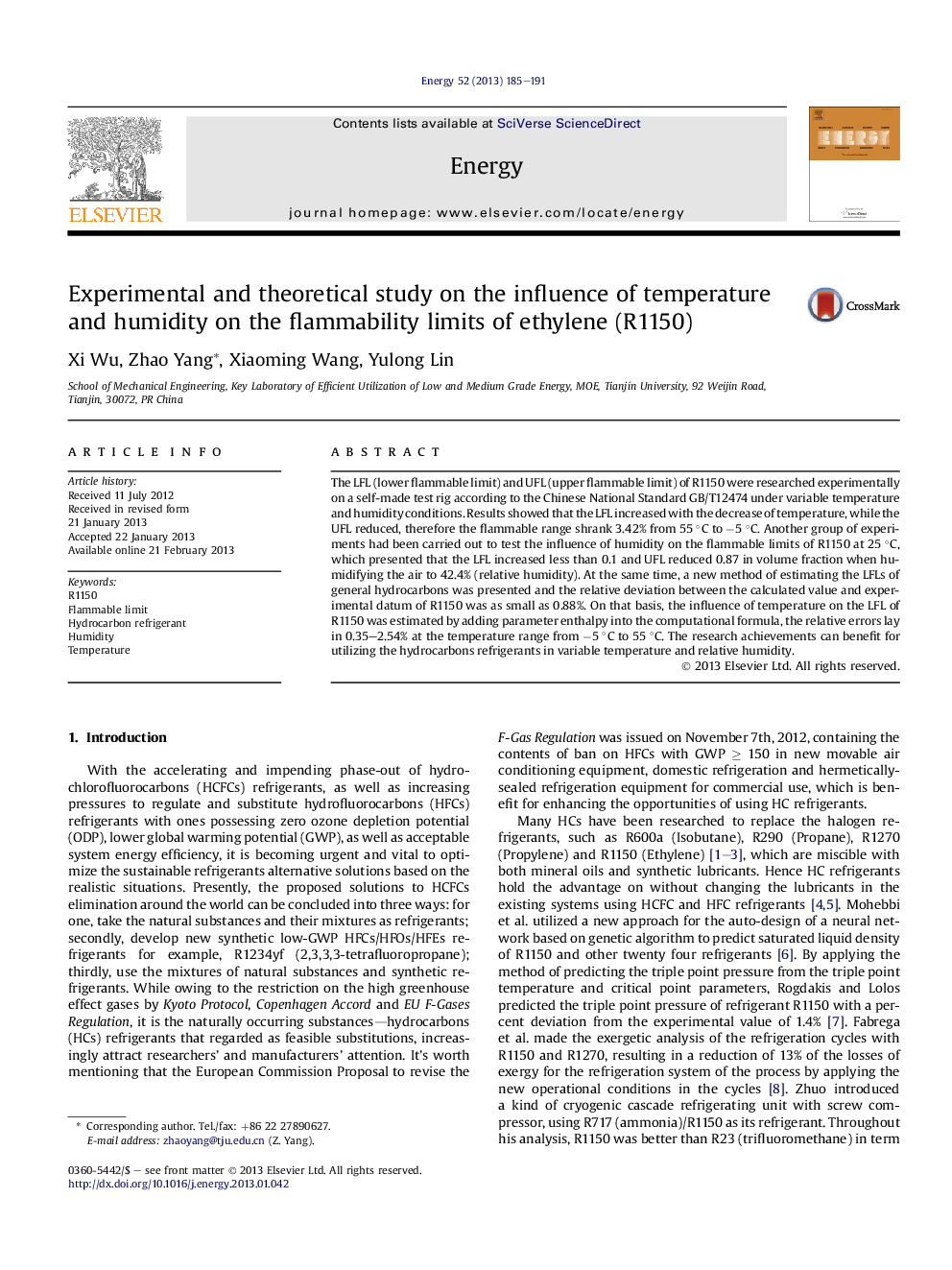| کد مقاله | کد نشریه | سال انتشار | مقاله انگلیسی | نسخه تمام متن |
|---|---|---|---|---|
| 1732840 | 1521494 | 2013 | 7 صفحه PDF | دانلود رایگان |

The LFL (lower flammable limit) and UFL (upper flammable limit) of R1150 were researched experimentally on a self-made test rig according to the Chinese National Standard GB/T12474 under variable temperature and humidity conditions. Results showed that the LFL increased with the decrease of temperature, while the UFL reduced, therefore the flammable range shrank 3.42% from 55 °C to −5 °C. Another group of experiments had been carried out to test the influence of humidity on the flammable limits of R1150 at 25 °C, which presented that the LFL increased less than 0.1 and UFL reduced 0.87 in volume fraction when humidifying the air to 42.4% (relative humidity). At the same time, a new method of estimating the LFLs of general hydrocarbons was presented and the relative deviation between the calculated value and experimental datum of R1150 was as small as 0.88%. On that basis, the influence of temperature on the LFL of R1150 was estimated by adding parameter enthalpy into the computational formula, the relative errors lay in 0.35–2.54% at the temperature range from −5 °C to 55 °C. The research achievements can benefit for utilizing the hydrocarbons refrigerants in variable temperature and relative humidity.
► LFL increases with the decrease of temperature, while the UFL reduces.
► Humidity of air is another effect factor to the flammable limits of refrigerant.
► Flame colors of LFL and UFL are pale blue and salmon pink respectively.
► Chemical bond energy and enthalpy were applied to estimate the LFL.
Journal: Energy - Volume 52, 1 April 2013, Pages 185–191